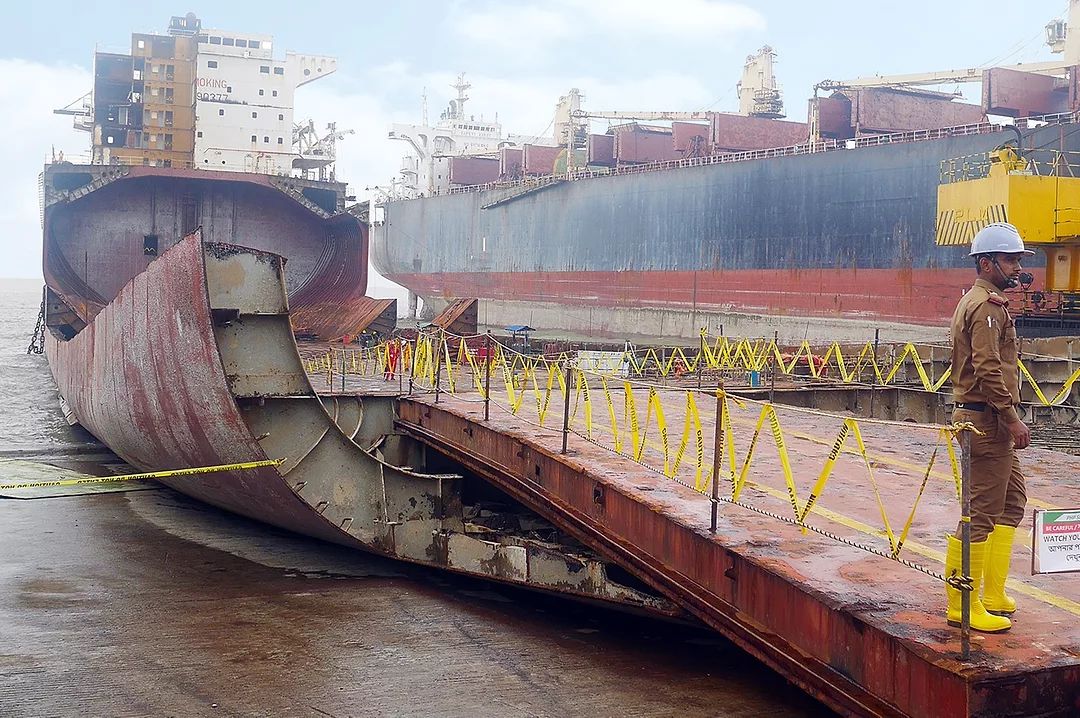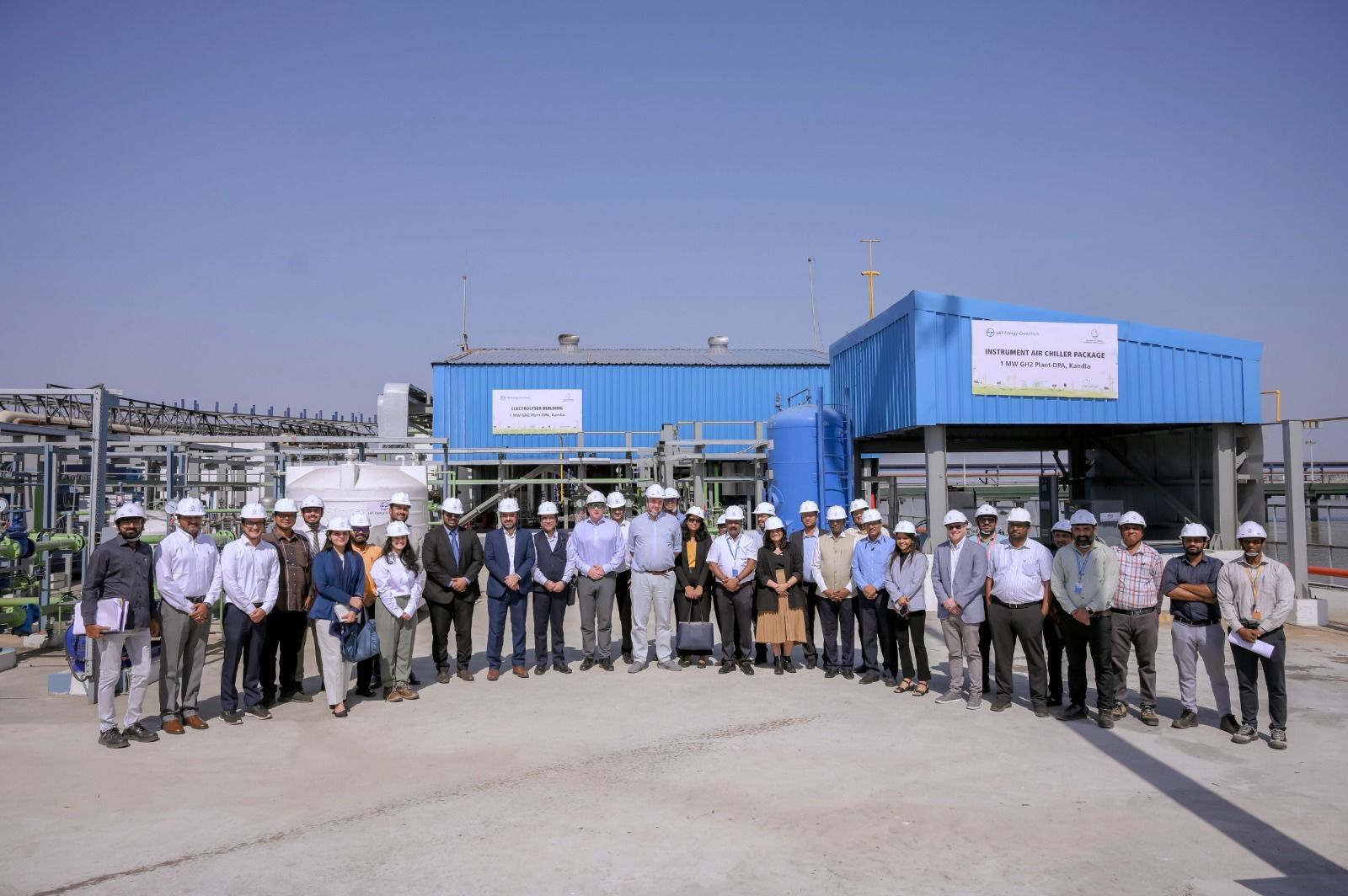Trump Tariffs Threaten to Undermine Fragile Ship Recycling Markets
The already fragile ship recycling market in the Indian subcontinent faces fresh headwinds as fears grow over the impact of former U.S. President Donald Trump’s tariff strategy on global steel prices. Industry experts warn that an influx of cheap Chinese steel, potentially triggered by the tariffs, could further weaken recycling margins, which are already under pressure due to market uncertainties and tumbling charter rates.

Tumbling Charter Rates Drive Recycling Sales
A recent decline in day rates for shipping has led to a surge in shipowners offloading older vessels for scrap. Until recently, strong freight markets had kept aging ships profitable, delaying their entry into the recycling sector. However, as the economic outlook shifts, more vessels are making their final journey to South Asian shipbreaking yards.
Among the recent arrivals are multiple bulk carriers, tankers, an LNG carrier, and an elderly passenger ship. Despite shipowners’ preference to keep vessels in operation, many have opted to scrap rather than invest in expensive tonnage upgrades at a time of great market uncertainty.
The Role of Steel Prices in Recycling Economics
Ordinarily, a rise in ship recycling activity would be accompanied by strong scrap prices, helping offset the cost of decommissioning a vessel. However, the current surge in scrapping has not been driven by attractive recycling prices but rather by necessity. The recycling sector is already facing price pressures, and Trump’s tariff policies could exacerbate the situation by encouraging China to flood global markets with excess steel.
The fear among ship recyclers is that China, facing its own trade restrictions, could dump steel onto international markets at lower prices, making recycled ship steel less competitive. If that happens, South Asian shipbreakers—already dealing with fluctuating local demand—could see their margins further squeezed.
South Asia’s Recycling Market: A Regional Breakdown
According to statistics from GMS, the world’s largest cash buyer of end-of-life ships, Bangladesh’s Chattogram breakers have been the busiest in recent days, receiving seven vessels totaling 81,600 light displacement tons (ldt). This includes five bulk carriers, a general cargo ship, and the 25-year-old LNG carrier Lean, which was registered under the St. Kitts and Nevis flag.
Meanwhile, Indian recyclers have taken delivery of six ships, including two oil tankers, two supply vessels, an oil rig, and a passenger ship. The total tonnage arriving at Alang amounted to 74,350 ldt.
Pakistan’s Gadani yards, while showing renewed interest in acquiring ships for recycling, continue to struggle with domestic economic issues and sluggish steel plate prices. With the potential for even cheaper steel flooding the market, Pakistani breakers face the risk of further declining profitability.
Current Recycling Prices and Future Outlook
The most recent pricing data from GMS reflects a slight easing of rates across South Asia. Bangladeshi recyclers currently lead with indicative prices of $475 per ldt for container ships, $465 for tankers, and $445 for bulk carriers. Indian and Pakistani recyclers are slightly lower across the board, each trailing Bangladesh by about five dollars per ldt.
With trade tensions on the rise and steel prices under threat, the outlook for the ship recycling industry remains uncertain. If Chinese steel prices decline sharply due to Trump-era tariffs, recyclers in the Indian subcontinent may find themselves in an even weaker position, unable to sustain current price levels.
A Difficult Road Ahead
For shipowners, the decision to scrap vessels is already a tough one, given the high cost of compliance with increasingly stringent environmental regulations. The current market dynamic means that many owners are choosing the “lesser of two evils”—selling for scrap rather than spending heavily on necessary upgrades.
However, if cheap steel imports continue to depress scrap prices, the ship recycling industry could suffer prolonged stagnation. Shipbreakers, who rely on stable steel markets to maintain profitability, would find it harder to bid competitively for vessels, potentially leading to a slowdown in the recycling sector.
Conclusion
The interplay between global trade policies and regional recycling markets is becoming increasingly complex. As shipowners weigh their options in a turbulent market, the fate of the ship recycling sector hinges on the trajectory of steel prices. If Trump’s tariffs lead to a surge in cheap Chinese steel exports, recyclers in South Asia could face even greater financial strain, undermining the fragile recovery seen in recent weeks.
For now, shipowners, recyclers, and market analysts will be closely watching steel price movements and geopolitical developments. The coming months will be crucial in determining whether ship recycling remains a viable option or if further economic shocks push the industry deeper into crisis.
Author: shipping inbox
shipping and maritime related web portal








